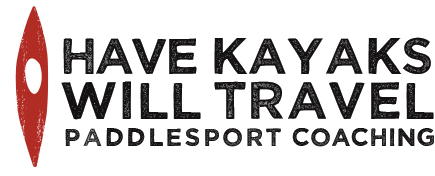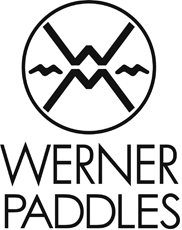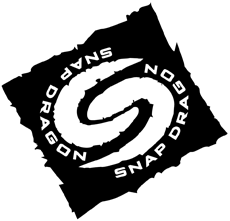Yesterday was warm–very warm. The air temperature topped out at 76 degrees. Yesterday was also windy–very windy. The peak gust measured at the Harrison Street crib was 50 knots. Yesterday, in other words, was an interesting day to paddle on Lake Michigan. Alec looks back before paddling past the “dolphins.” Yes, that’s what those pilings are called! The water off North Avenue Beach was calm because of a jetty and the shape of the land, and the stretch south to Navy Pier was similarly protected (meaning the wave height didn’t correlate with the wind speed). The water was bumpy, and we could see gusts on the water before they hit us. It was one of those days when you put into practice what you’ve read about paddling into the wind. If your casual sightseeing speed is about 3 knots but the wind is reducing that to 1.5 knots, then cranking up your effort to a 4.5-knot pace will effectively cut in half the time it takes to get to your destination. Talk about a good trade-off. After we passed Navy Pier, such thoughts blew off with Alec’s hat and all we could think about was, “Is this such a good idea?” That’s when the wind reached its peak speeds. The water was cold (38 to 40 degrees), there was lots of clapotis, and a quick check over our shoulders confirmed that we weren’t making much progress. Fortunately, we had options, and the one we chose was turning around and returning to the lee of Navy Pier. We checked out the Chicago Fire Department boat, which was built in the 1940s and still boasts on its side in bright yellow letters, “We’re there when you need us.” Barry, who was on duty that day, was out enjoying the weather and appreciating a job that apparently consists of long periods of calm punctuated by moments of absolute urgency. Barry, with beverage and books, gently informed us that we were paddling in a restricted area. Then we flew back to North Avenue with the wind at our...
Testing….testing….
Will Glacier Gloves finally win us over from pogies? Gloves vs. pogies. Like so many similar debates (paper vs. plastic, cloth vs. disposable), it probably comes down to personal preference.The other day, we tested gloves and pogies on a 15-mile paddle. Water temperature: 36 degrees. Air temperature: 40 degrees. Winds: 5 to 10 knots.We gave gloves their best shot, using Glacier Glove’s neoprene Premium Paddling Gloves. We’ve tried a lot of other gloves, and we’ve found most to be too thick and inflexible to allow us to use our fingers for much of anything. By contrast, we were impressed by the amount of dexterity we had with these gloves. We were able to put on our spray skirts, take photos, raft up and hold each other’s decklines, and even push the tiny toggle on the camera that switches between still shots and movies. Alec’s hands stayed comfortable and warm, even when they didn’t stay dry. Sharon’s didn’t stay as warm; for her, there’s no substitute for pogies, which allow the fingers to warm each other. (The obvious downside to pogies, however, is that they leave you with no hand protection during a rescue–a serious problem–or even while taking photos or eating lunch.)These were, by far, the best gloves we have tried. They are flexible and fit well. (We’re also fans of Glacier Glove’s neoprene 3/4 dome hat and full dome hood. The latter keeps your neck warm in addition to your head–a definite advantage in seriously cold weather!) Can a low-frequency horn be heard further than a high-frequency whistle? On a recent trip to West Marine, we came across this funny-looking low-frequency marine horn. We thought its sound might travel further than the sound of our ordinary marine whistle. So we tested them in the harbor–Alec with the horn, Sharon with the whistle–moving incrementally away from each other.There are a couple of problems with this experiment, of course. We didn’t control for different lung capacity, different hearing ability, or the minimal effect of the light wind in the harbor. Nonetheless, we were able to hear the sound of the marine whistle a little bit further than the marine horn. The horn is also much larger than the whistle–too large to stow in a PFD pocket. After today, it may not see much more of Lake...
Sit! Heel! Paddle!
We share a few of our favorite Lake Michigan put-ins with local dog-walkers and their four-legged charges. Today, while we were loading our boats, a man drove up in a minivan full of dogs, including one the size of a small horse. Hold still. Smile…. Come back here and show me your pretty face. Atta...
A few hours on the water with Justine
With Canoecopia over and a serious case of spring fever afflicting us, and Justine Curgenven visiting before returning home to Wales, we decided to get out on the water with friends Bonnie Perry and Paul Redzimski. Paul and…. …Justine stayed warm with a little frisbee. Justine seemed a little disappointed that there was no more ice on the lake. (She had seen our photos in an earlier blog post.) But that certainly made the put-in easier. North Avenue beach, where we could now carry over exposed sand. With the wind blowing out of the north, we paddled south along the shoreline to Navy Pier. It’s calming to be on the water, with the sounds of the city muffled and so much open space around us. We always wonder how visitors like Justine experience our home marine environment. As we rounded the Pier, Chicago’s skyline came into view. Paul explored the sea caves beneath Navy Pier. We threaded our way through the remains of Dime Pier. Realizing that we would have to paddle against the wind on our way back (and not to wanting to be responsible for getting Justine to the airport late), we turned around and paddled north. Heading Northeast to the light house. We were the only people on the water. We stopped to look at the remains of winter ice on the break wall. We landed and loaded up, a little colder but certainly happier for having gotten...
2010: A Canoecopia Odyssey
Canoecopia is the official start of the midwestern paddling season. For those who don’t know about Canoecopia, it’s a paddlesport exposition–part trade show, part conference-style presentations, part paddling friends reunion–that takes over the Alliant Center in Madison, Wisconsin for three days. This year, Canoecopia started early with the arrival of Justine Curgenven, expedition sea kayaker and the adventure filmmaker behind the “This is the Sea” series and now “This is Canoeing.” (We will review the Canoeing DVD soon.) Justine and Hannah Facebook each other from across the table and across the Atlantic. The next day, we drove up to Canoecopia, arriving in time to watch the vendors finish setting up their booths. There were boats, paddles, clothing, tents, magazines, outdoor programs, jewelry….pretty much everything that relates to paddlesports and camping and then some. The parking lot was filled with cars and boats of all types. Eric Jackson demonstrates the hull strength of his boats. Justine was happy to see so many DVDs for sale. Funny, all these stacks seem to be “This is Canoeing!” Over time, more and more people arrived. It was enough to cause an otherwise calm mannequin to run away screaming. Hey! Get back here with that PFD! There seemed to be slightly fewer vendors this year, but interest was high and sales were good. The presentation schedule was packed with a mix of practical and inspiring sessions, and many that managed to be both at once. A few scenes from the...
Golden Gate Sea Kayak Symposium, part three
Gordon Brown and Sean Morley, going over the day’s plan. We were attracted to the Golden Gate Sea Kayak Symposium by the high-level coaching, the venue, and the diversity of sea conditions that were virtually guaranteed. (OK, and the opportunity to leave Chicago in February.) The hard part was choosing among the offerings. In the end, it came down to selecting classes that took advantage of the current, surf and rocks, or attending the revised BCU 4-star training. After much consideration, Alec chose the 4-star, based on the location, last year’s description, and the fact that Gordon Brown and Tom Bergh would be leading the class. Sharon chose a “master class” on boat handling with Gordon Brown, rock gardening, and a class on riding the tides. In this, our last post from the GGSKS 2010, we’ll write about some of what we did and what we learned. Warning: long post ahead. From Alec: The new 4-star is a leadership award. This means that beyond having to demonstrate a defined list of personal paddling skills, you are able to safely lead a group of four 3-star paddlers in specified conditions. Gordon and Tom emphasized the gravity of the responsibility you take on by choosing to lead a group onto the water. The 4-star assessment also requires completion of a BCU-approved navigation class, a two-day leadership training and 2 day approved first aid class with CPR. My first day involved a the full-day classroom-based navigation class, taught by Tom Bergh and Rob Avery. It was tough to travel all the way to San Francisco and spend a full day on dry land, although the weather made it a bit easier. The class was engaging and interactive, and covered a full syllabus of basic navigation skills, weather formation, rules of the road and buoyage. We created trip routes taking into account tidal currents, wind and as many other factors as we could glean from the charts and pilots. Though we stayed dry ourselves, the content was anything but. The four-star training included group management under the Golden Gate Bridge. Day two began the 4-star leadership training. After warming up and practicing some group management exercises on the water, we headed out to a point just below the north tower of the Golden Gate Bridge. The ebbing current created an eddy line that grew stronger by the minute. Crossing the eddy line wasn’t that different from what I’ve done on river trips ( larger for sure), but we also had swell to contend with and the consequences of missing the eddy were serious: being pushed out under the bridge and into the busy shipping channel there. Our group...
Golden Gate Sea Kayak Symposium, part two
The weather was great for fans of gnarly conditions. The first day’s forecast called for 100% chance of precipitation and winds of 20 to 30 knots gusting to 45. That turned out to be accurate. There was even some hail. Gordon Brown, at home in typical Scottish weather. That didn’t keep the classes off the water, however. But considering the winds, the especially strong currents and the waves of 18 to 20 feet, nobody ventured out of the San Francisco Bay and several of the classes stayed in the harbor all day, tucking in beside the walls during the strongest gusts. Only the participants in the navigation class stayed indoors–offering a better definition of a dry class. Rob Avery demonstrates a tactical navigation technique. Toward the end of the afternoon, the low-pressure system causing all that wind and rain moved on and the sun came out. That evening, we ventured down to Point Bonita with the home team (Bonnie Perry, Kelly Blades and Mark Pecot) to marvel at the mammoth waves. ...
Golden Gate Sea Kayak Symposium, part one
We just returned from the second annual Golden Gate Sea Kayak Symposium and we’re still processing the experience and the photos. This was an unusual symposium for us because we attended as students, not as instructors. Alec took the BCU four-star training with Gordon Brown and Tom Burgh, while Sharon chose courses that would give her more experience paddling Pacific coast features like rock gardens and tidal races.We’ve always loved Marin County, where the symposium was based. Just across the Golden Gate Bridge from San Francisco, the Marin Headlands were almost developed in the 1960s but saved by a lawsuit and protected instead as part of the Golden Gate National Recreation Area. Coaches and participants stayed at the Marin Headlands Hostel, a former US Army base now converted into a hostel and arts center, and classes were based in Horseshoe Cove near Sausalito. An aerial view of Horseshoe Cove. We’ve visited this area more than a dozen times over the past two decades to hike the hills, explore the historic fortifications, and collect driftwood from the beaches. It’s long been a favorite vacation destination, but we never paddled in the Pacific ocean or the San Francisco Bay. Until now. Sharon, gearing up for a day on the water. The symposium featured an all-star cast of coaches from around the world. (Check the website for the complete list.) But we were also drawn by the opportunity to meet many of the excellent but lesser-known west coast coaches who were the backbone of this successful event. We weren’t disappointed. Cindy Scherrer isn’t a lesser-known west coast coach, but she is one of our favorites. Ironically, we also spent considerable time with midwestern coaches Kelly Blades (an old friend) and Mark Pecot (a new friend). How odd to go 2,000 miles to hang with your home team. Kelly Blades, always on. Check back tomorrow for more about the courses we took and the things we...
Fun and games (and some learning, too)
Hold on tight! We meant to post some photos and videos a couple of weeks ago, but we were too busy playing games and nobody wanted to stop and take out a camera.But this past week, we imposed some discipline on ourselves. During open pool sessions at three local pools — Naperville North High School, UIC and the West Cook YMCA — we filmed some games and other silliness.The first video shows one of several games you can play using a tow rope. Sometimes we attach two boats stern to stern and have kayakers of similar ability paddle away from each other, trying to pull more than they are pulled. Variations on this include experimenting with different paddles (type and length) and attaching the boats bow to stern and having the paddlers compete forward stroke against reverse stroke.Here, however, Tom is rolling while Alec has him under tow. This is a good way to work beyond the “pool-proof roll” because it simulates rolling while in motion or in current. Towing game from Sharon Bloyd-Peshkin on Vimeo. The next video shows one of many games that help develop boat control. Here, three paddlers raft up at one end of the pool. The first paddler draws sideways while the second paddler holds on. The third paddler pulls out and around to assume the first position and the rafted tow continues. Whoever is left outside of the raft at the opposite end of the pool is “out.” (We suspect this would be even more fun with more paddlers in the raft.) Musical kayaks from Sharon Bloyd-Peshkin on Vimeo. Games like this evolve out of a “what it…” suggestion, typically followed by an “I know! I know!” What if we raced sideways? I know! I know! What if, while racing sideways, the first person tows the second….?There are many variations on each of these games. The goal is to have fun while working on skills.We’ll try to post more as we collect videos, assuming we aren’t having too much fun...
Indoor paddling? Play’s the thing!
We weren’t looking forward to the indoor paddling season this year. In the past, we made good use of true “flat water” time to practice specific skills like rolls, braces and rescues. But these days, the things we want to practice require space and waves. There’s just no good way to work on surf landings indoors. But we’ve been pleasantly surprised to discover that this has actually been a very fun and productive indoor paddling season, thanks in large part to our BCU training (with Bill Lozano of BCUNA, Scott Fairty of Geneva Kayak Center and Kelly Blades). We credit the BCU with helping us get out of our work-on-a-specific-skill mentality and into more of a learn-by-play approach. In the coming weeks and months, we’ll post some of the games we’ve been playing, along with photos and videos. If you have some to share, please post them in our...







